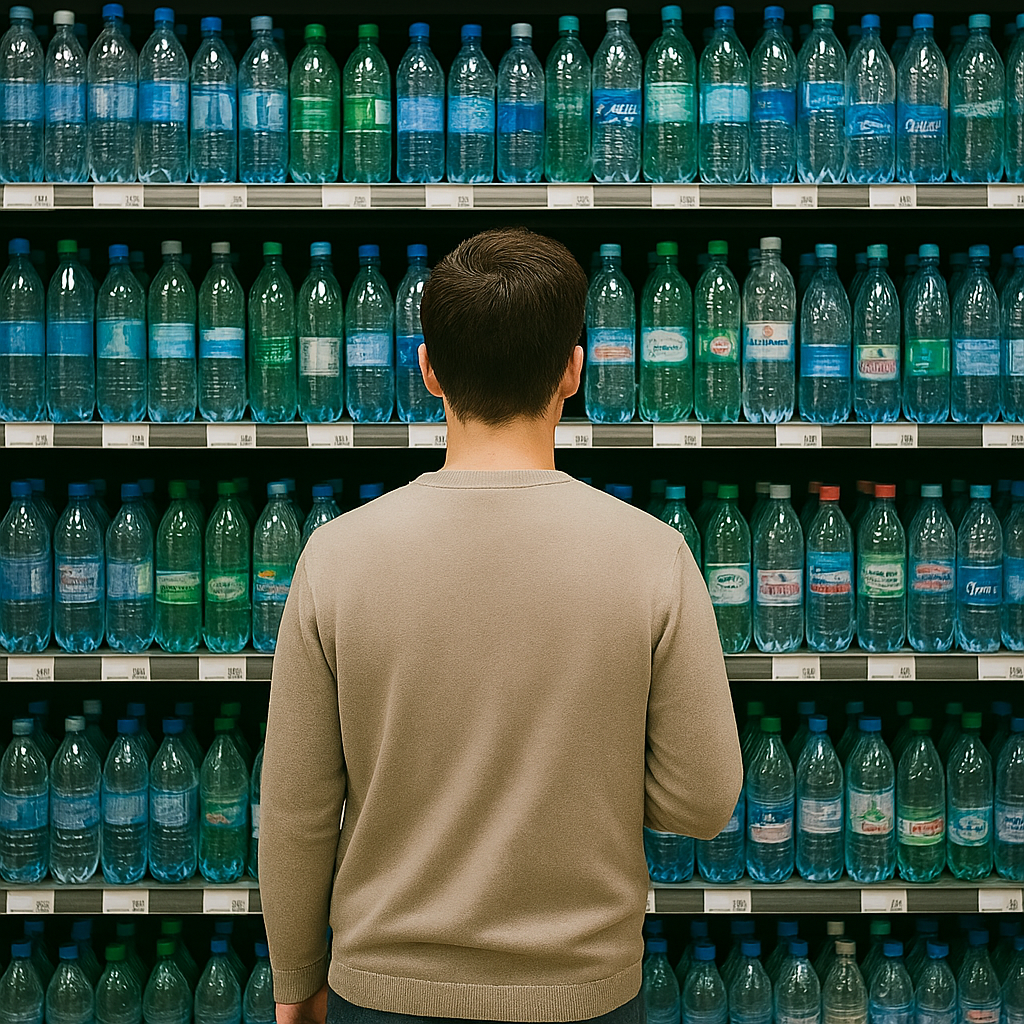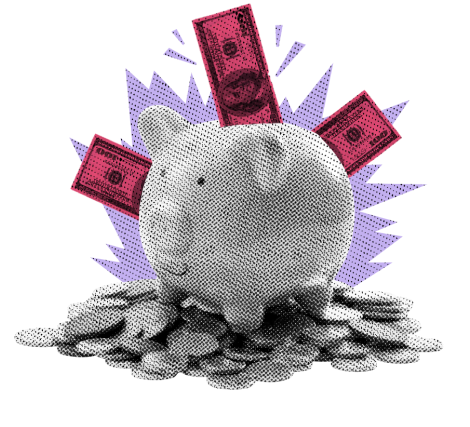Inflation meets economic theory in today’s blog—demand curves, price hikes, and who absorbs the pain.
KEY TAKEAWAYS
-
Consumption makes up over ⅔ of GDP—it's the lifeblood of the economy.
-
Price elasticity determines how much companies can raise prices without losing customers.
-
Inflation and loss of income are the biggest threats to consumption.
-
Tariffs raise company costs—only firms with pricing power can protect their margins.
-
Products like insulin and iPhones are inelastic; bottled water and tomatoes are not.
MY HOT TAKES
-
Pricing power is about survival in a tariff-driven world.
-
Generational differences may influence how sensitive consumers are to inflation and risk.
-
The real inflation story is hidden in the slope of a demand curve.
-
Economic theory matters—especially when it hits consumers’ wallets.
-
Tariffs won’t just hurt “the economy”—they’ll hit some companies much harder than others–make sure you own the ones with pricing power.
-
You can quote me: “Someone in the USA is going to pay for that tariff! It will either be the consumer or the company.”
It’s complicated. Thankfully, I am not referring to my relationship with my wife that spans back to an evening in January 1986, when a twist of fate brought us together. The US consumer’s relationship with consumption however is not nearly as straight forward.
My longtime followers know just how obsessed I am with consumers and consumption. They also know that the reason for my obsession is largely due to the fact that consumption–purchases made by you and me–makes up more than ⅔ of GDP. That’s a lot. Imagine a pizza pie cut in three big slices, and think about what would be left if someone just removed two of those slices. Yeah, I know I just struck a chord of disappointment in your now-growling belly, but I am hoping that I underscored the importance of consumption with that most-unorthodox image.
Just what would it take to get consumers to stop consuming? Of course, there are many things, but two drivers are top of mind: loss of income or inflation. It just so happens that those two things are the Fed’s sole purpose, its dual mandate. Ensure a healthy labor market and keep inflation in check.
Inflation was not really in the zeitgeist for many years and most likely not even understood by most Gen-X’ers and certainly not by any Millennials or Gen-Zs. However, we all got a crash-course in it in the aftermath of the pandemic. I asserted earlier that inflation could be a consumption killer. It is a basic microeconomic tenet. Demand declines as prices rise; that is why the demand curve is downward sloping. Hold that thought and allow me to veer for a moment.
I also mentioned “loss of income” impacting consumption. That should be pretty straight-forward. If you lose your job, you have no income to consume. If you think you are going to lose your job, you may temper your consumption. If you are concerned that the economy may be headed for the rocks, you may slow your spending, because recession usually comes with an increase in unemployment, which only makes it harder to reverse. Of those three examples, the first is very tangible: unemployment ⬆️ = consumption ⬇️. The other two really depend on how sensitive consumers are. That, I suspect, may also vary amongst generations, with the older ones being more conscious. What that means, is spending patterns are changing. Let’s veer back onto the discussion of inflation.
Just how much are you willing to pay for a tomato? How about an iPhone? How much would you shell out for rent? If you are diabetic, how much would you pay for insulin? And to really throw you off, how much would you pay for a bottle of water? Now, you don’t have to answer those questions with actual amounts, but I would like you to re-read them and recognize that all those products have different demand profiles.
Even if you love tomatoes, you will at some point buy only one instead of two if prices get high enough. At first you may buy less of something else, but ultimately you will simply demand a lower quantity and possibly forgo tomatoes altogether at some price.
An iPhone is a tricky one. There are two major producers of high-end smartphones, Apple and Samsung. If you are an Apple fanboy, there is simply no substitute. Now I am assuming that your old phone is broken and you have to make a choice. Technically, you can live without a phone but it would be hard in 2015, so a choice is necessary. With very little in the way of substitutes, the demand curve would be extremely steep, meaning that iPhone purchase decisions are not very price sensitive.
Next, I gave an example of the touchy topic of rent. Shelter, one of the three basic needs, is not really a choice. We need it to thrive–we need it to survive. Given that it is a necessity with no real substitute, the demand curve for shelter is pretty steep as well, meaning it is not very price sensitive. Of course, that is an extreme statement, because within that broad category of “rent” there are many choices of varying quality which offer many alternatives, ranging from tent up through mega-mansion. In that extreme range, it is likely that the mega-mansion would have a shallow demand curve while the tent would have a very steep one.
Next, I brought up Insulin. This example should be clear to you. If you are diabetic, there is no alternative, so, theoretically at least, you would pay any price for the medication. Can you picture Insulin’s demand curve in your mind? It is almost completely vertical, if not perfectly. Keep this in mind–we will come back to it in a moment.
Finally, I brought up bottled water. I will ask you again, how much would you pay for a bottle of water? Is there a limit? Would you say that the limit is lower than the other extreme, Insulin, which I just brought up? Of course it is! You may enjoy bottled water. You may even think that it is a necessity. That is, of course until it costs so much and you are so thirsty that you just grab a cup and head to the tap. You want to get technical? There are many brands of bottled water that range in price. Not surprisingly those prices are correlated with the level of bougie or woo-woo factor. Think: Evian versus Poland Springs versus no-name grocery brand versus tap water. Are free radicals ruining your life? There is a woo-woo water brand for that, infused with selenium. I am not sure what it feels like to have a free radical problem nor do I know what selenium is, but I am sure that someone is willing to buy it… for a price. There are lots of substitutes.
Ok, take a breath. This is where we bring it all together. The concept I just covered with you is called price elasticity in economics. It is a fancy term to describe the relationship between quantity demanded and price. You can call it a measure of price sensitivity. Insulin demand is not sensitive because there are no substitutes. That would make it perfectly inelastic. On the other end of the spectrum, we have bottled water which is highly sensitive because there are many substitutes at different price levels–it is highly commoditized. Demand for water is therefore highly elastic, with an almost horizontal demand curve.
Why am I bringing this up? Well, inflation is very much on the brain of the markets these days due to the administration’s proposed trade policies. Companies must pay tariffs. Those tariffs increase costs and reduce margins. A company’s sole purpose for existence–its raison d'être–is to maximize profit. In order to maintain margins and profits, companies will seek to raise prices. We all know this, but what we need to think more carefully about is: how much can a company raise prices without suffering the loss of its customers? Even faced with declining margins, a company which sells a luxury item with many substitutes may not be able to raise prices. It may have to eat the tariff or face losing business altogether. Let’s go back to the example of the iPhone. We concluded earlier that there are very few, if any, substitutes. Its demand curve is steep–inelastic, because demand is not very sensitive to price. Apple is said to have pricing power. More extreme yet is Insulin, in which its producers (mainly Novo Nordisk, Sanofi, and Eli Lilly) can charge almost anything, theoretically, without risking loss of demand–almost perfectly inelastic. Now that is pricing power. Companies with pricing power are clearly, highly likely, therefore, to raise prices as their costs go up. On the other hand, Perrier may struggle if it raises prices due to the elastic nature of its demand.
Let’s take a step back. Tariffs are coming. We know that, at the bare minimum, tariffs will amount to 10%, and that minimum may be rising. Someone in the USA is going to pay for that tariff! It will either be the consumer or the company. How much the consumer will pay has everything to do with the company’s pricing power. That pricing power has everything to do with the slope of its demand curve–its elasticity. So, when wondering what might happen to stocks if these proposed tariffs go into effect, one needs to look at companies and their individual products. Companies with pricing power will be better off than ones without. Pro tip: beware of the ones with highly elastic demand curves.
As you can see, this potentially massive load of tariffs will certainly have an impact on consumers’ wallets and companies’ financial health. Both or either, depending on the shape and slope of their demand curves. Exactly how much? Well, it’s complicated.
YESTERDAY’S MARKETS
Stocks rallied yesterday on strong retail sales figures which showed that consumers in the US simply love consuming, even when faced with inflation and a sluggish economy–YOLO. Weekly jobless numbers came in below moving averages–still high–but hardly spiking.


.png)

